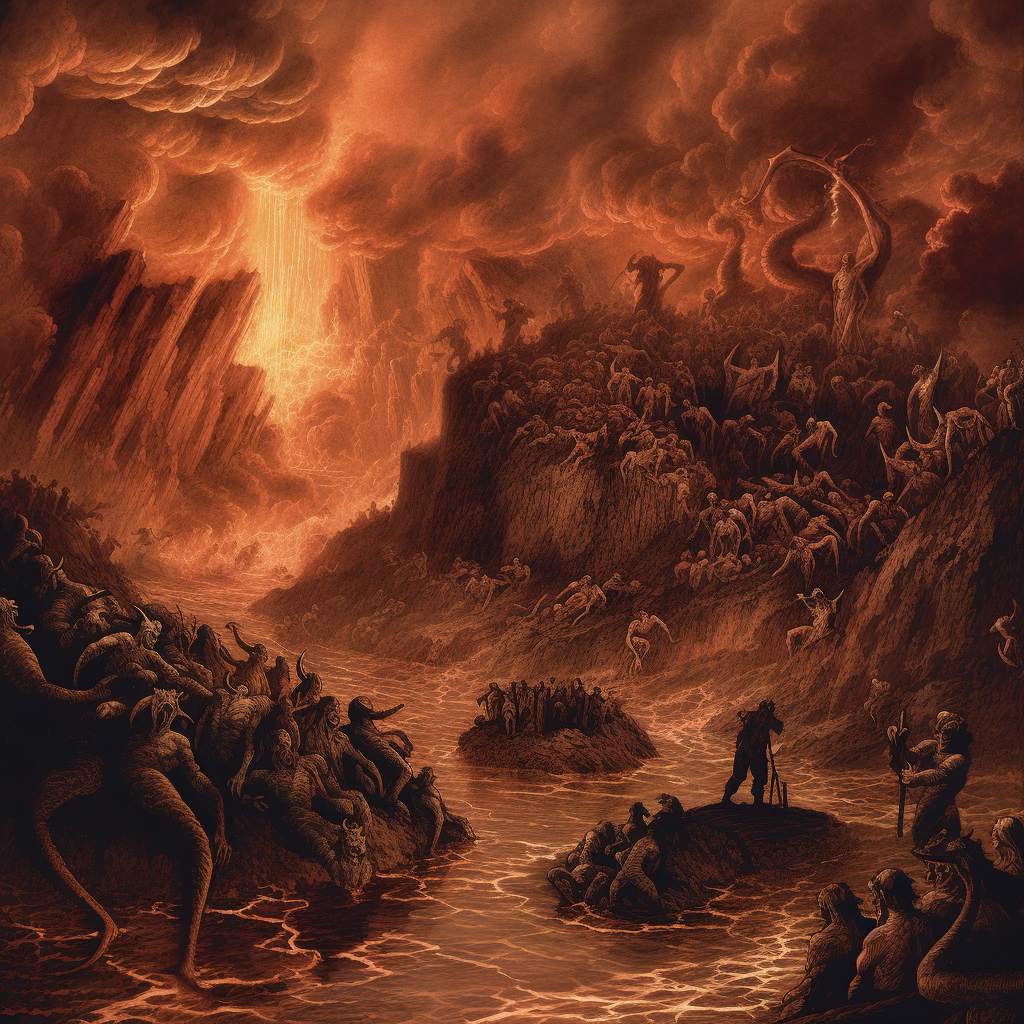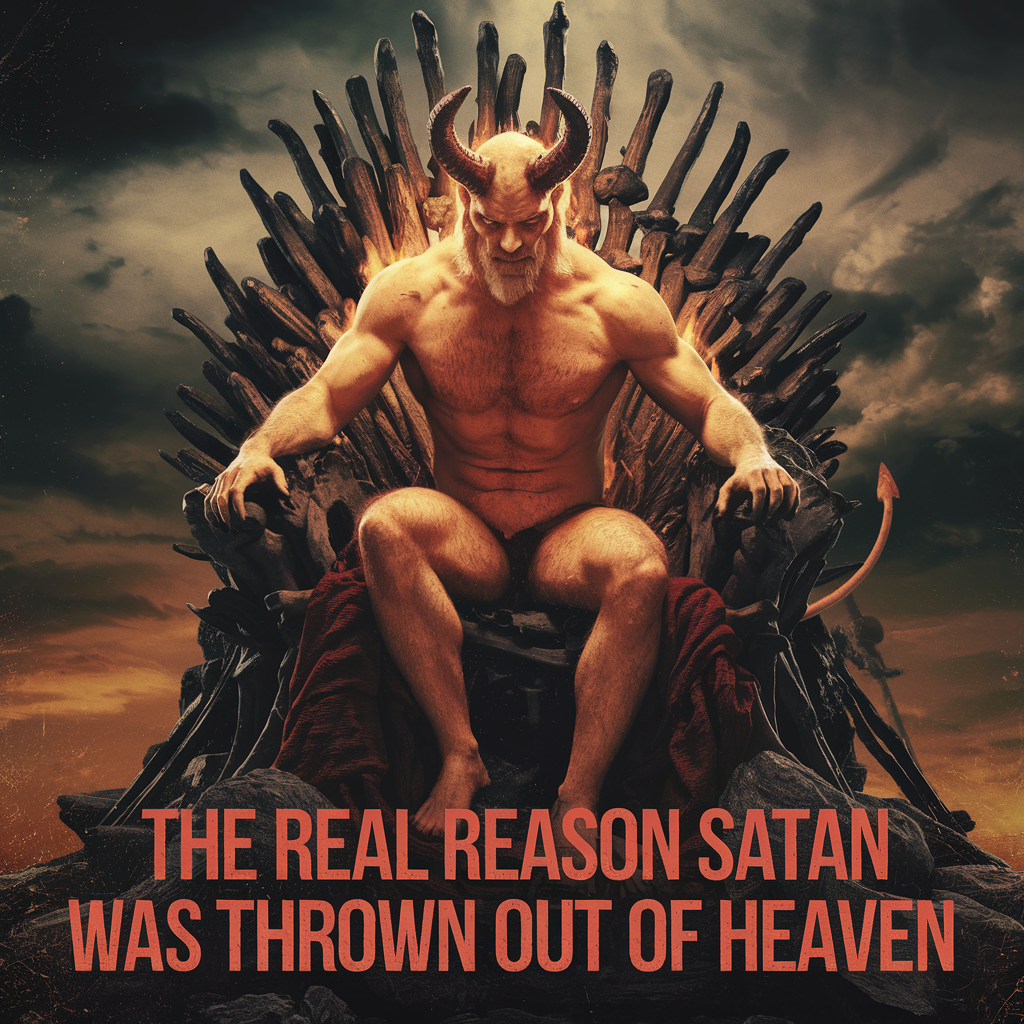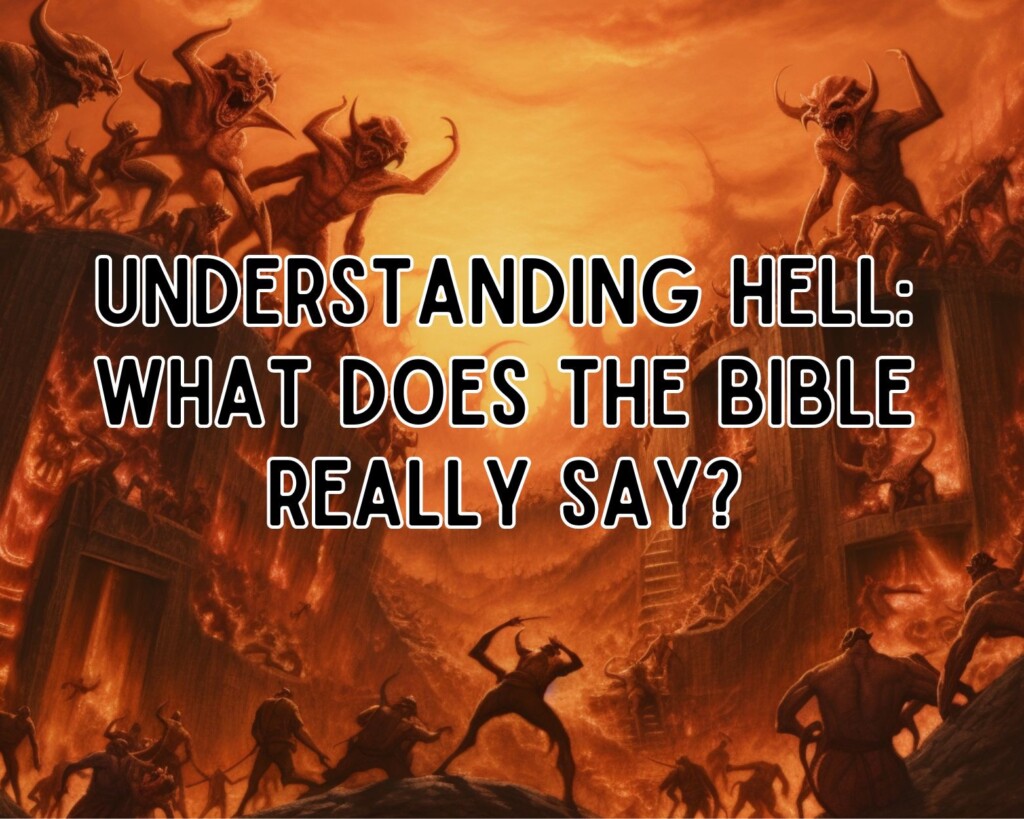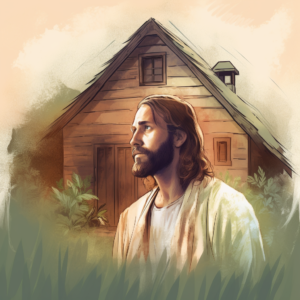The concept of Hell and the Lake of Fire has been a topic of much debate, intrigue, and concern for many Christians throughout history. The Bible provides vivid descriptions of this place, painting a picture of the dire consequences awaiting those who reject God’s grace. Let’s delve into these scriptures to gain a deeper understanding of what the Bible says about Hell and the Lake of Fire.

1. A Lake of Fire (Rev. 20:15)
Revelation 20:15 states, “Anyone whose name was not found written in the book of life was thrown into the lake of fire.” This lake is the final destination for the wicked, emphasizing the importance of having one’s name in the Book of Life, which signifies salvation.
2. A Bottomless Pit (Rev 20:1-3)
In Revelation 20:1-3, we read about an angel coming down from heaven, holding the key to the bottomless pit. This pit is where Satan is bound for a thousand years, preventing him from deceiving the nations. The bottomless nature of this pit symbolizes an endless fall or depth, highlighting the severity of the punishment.
3. A Horrible Tempest (Ps. 11:6)
Psalm 11:6 describes, “Upon the wicked he shall rain snares, fire, and brimstone, and a horrible tempest.” This tempest, or violent storm, represents the wrath of God poured out on the unrighteous.
4. A Place of Everlasting Burnings (Isaiah 33:14)
Isaiah 33:14 poses the question, “Who among us shall dwell with the devouring fire? Who among us shall dwell with everlasting burnings?” These everlasting burnings emphasize the eternal nature of the punishment in Hell.
5. A Furnace of Fire (Matt. 13:41, 42)
In Matthew 13:41-42, Jesus speaks of the end times, saying, “The Son of Man will send out his angels, and they will gather out of his kingdom all things that offend, and those who practice lawlessness, and will cast them into the furnace of fire.” This furnace signifies intense heat and suffering.

6. A Devouring Fire (Isaiah 33:14)
Again in Isaiah, the wicked are described as facing a “devouring fire,” emphasizing the consuming nature of this punishment.
7. A Place of Torments (Luke 16:23)
In the parable of the rich man and Lazarus, the rich man finds himself in torment in Hades. Luke 16:23 says, “And being in torments in Hades, he lifted up his eyes and saw Abraham afar off, and Lazarus in his bosom.” This passage provides a glimpse into the immediate suffering of the unrighteous after death.
8. A Place of Everlasting Punishment (Matt. 25:46)
Matthew 25:46 contrasts the fate of the righteous and the wicked, stating, “And these will go away into everlasting punishment, but the righteous into eternal life.” The term “everlasting” underscores the unending nature of this punishment.
9. A Place Where People Pray (Luke 16:27)
In a continuation of the parable of the rich man and Lazarus, the rich man pleads, “I beg you therefore, father, that you would send him to my father’s house.” This shows that even in Hell, there’s a recognition of one’s mistakes and a desire for loved ones to avoid the same fate.
10. A Place Where They Cry for Mercy (Luke 16:24)
The rich man’s plea continues in Luke 16:24, “And he cried and said, ‘Father Abraham, have mercy on me, and send Lazarus that he may dip the tip of his finger in water and cool my tongue; for I am tormented in this flame.'” This cry for mercy underscores the intense suffering experienced in Hell.
11. A Place Where They Wail (Matt. 13:42)
Matthew 13:42 describes the fate of the wicked, saying, “And will cast them into the furnace of fire. There will be wailing and gnashing of teeth.” The wailing indicates deep sorrow and regret.
12. A Place Where They Curse God (Rev. 16:11)
Revelation 16:11 reveals the hardened hearts of those facing God’s judgments, “They blasphemed the God of heaven because of their pains and their sores, and did not repent of their deeds.” Even in suffering, some will continue to reject and curse God.

13. A Place Where They Never Repent (Matt. 12:32)
Matthew 12:32 speaks of the unpardonable sin, stating, “Anyone who speaks a word against the Son of Man, it will be forgiven him; but whoever speaks against the Holy Spirit, it will not be forgiven him, either in this age or in the age to come.” This highlights the finality of judgment and the impossibility of repentance in Hell.
14. A Place of Filthiness (Rev. 22: 10, 11)
Revelation 22:10-11 reads, “Do not seal the words of the prophecy of this book, for the time is at hand. He who is unjust, let him be unjust still; he who is filthy, let him be filthy still.” This indicates that the wicked will remain in their sinful state, further emphasizing the permanence of their condition.
15. A Place of Weeping (Matt. 8:12)
Matthew 8:12 describes the fate of those who reject Christ, “But the sons of the kingdom will be cast out into outer darkness. There will be weeping and gnashing of teeth.” The weeping signifies deep sorrow and regret.
16. A Place of Sorrows (Ps. 18:5)
Psalm 18:5 uses poetic language to describe the dangers David faced, which can also be seen as a representation of Hell, “The sorrows of Sheol surrounded me; the snares of death confronted me.”
17. A Place of Outer Darkness (Matt. 8:12)
Again in Matthew 8:12, Hell is described as a place of “outer darkness,” emphasizing its isolation and hopelessness.
18. A Place Where They Have No Rest (Rev. 14:11)
Revelation 14:11 paints a grim picture of the fate of those who worship the beast, “And the smoke of their torment ascends forever and ever; and they have no rest day or night.” The lack of rest indicates continuous suffering.
19. A Place Where They Gnaw Their Tongues (Rev. 16:10)
Revelation 16:10 describes one of the bowl judgments, “Then the fifth angel poured out his bowl on the throne of the beast, and his kingdom became full of darkness; and they gnawed their tongues because of the pain.” The act of gnawing their tongues underscores the intensity of their torment.
20. A Place of Blackness and Darkness Forever (Jude 13)
Jude 13 warns of false teachers, comparing their fate to “wandering stars for whom is reserved the blackness of darkness forever.” This eternal darkness symbolizes separation from God’s light and presence.
21. A Place Where Their Worm Dieth Not, and the Fire is Not Quenched (Mark 9:48)
Mark 9:48 references Isaiah 66:24, emphasizing the unending nature of the torment, “Where their worm does not die, and the fire is not quenched.”
22. A Place Where They Are Tormented with Brimstone (Rev. 14:10)
Revelation 14:10 warns of the fate of those who worship the beast, “He shall be tormented with fire and brimstone.” Brimstone, or sulfur, produces a pungent odor when burned, adding another layer to the torment.
23. A Place from Which the Smoke of Their Torment Ascendeth Up Forever (Rev. 14:11)
Again in Revelation 14:11, the eternal nature of the torment is emphasized, “And the smoke of their torment ascends forever and ever.”
24. A Place Where They Do Not Want Their Loved Ones to Come (Luke 16:28)
In the parable of the rich man and Lazarus, the rich man’s concern for his family is evident, “For I have five brothers, that he may testify to them, lest they also come to this place of torment.” This shows that even in Hell, there’s a recognition of its horrors and a desire for loved ones to avoid the same fate.
The Bible provides a sobering and detailed description of Hell and the Lake of Fire. These scriptures serve as a warning and a call to repentance, emphasizing the importance of accepting God’s grace and the salvation offered through Jesus Christ.
Lucifer wants us to burn in Hell with him, I would rather stick with Jesus in heaven!
As an Amazon Associate we earn from qualifying purchases through some links in our articles.



